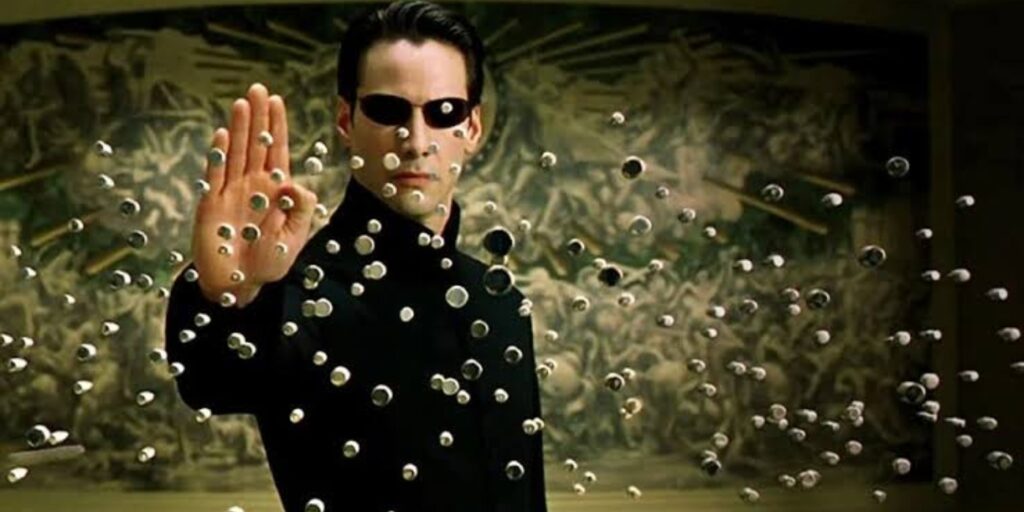‘The Matrix’ became one of the most iconic sci-fi films of all time since it’s release decades ago. The film became a cultural phenomenon, influencing everything from philosophy to fashion.
However, in recent years, a fresh interpretation has gained traction, the idea that The Matrix is a transgender allegory. This perspective, fueled by the Wachowski sisters‘ own journeys as transgender women, has sparked discussions about the film’s deeper themes. So, is ‘The Matrix’ intentionally a trans allegory?
‘The Matrix’: A Subconscious Reflection Of Wachowski Sister’s Journey

While ‘The Matrix’ was not consciously written as a trans narrative, its themes resonate profoundly with the transgender experience. Both the film’s creators and actors have spoken about this interpretation. This highlights the unconscious yet undeniable presence of trans themes. Let’s delve deeper into the evidence, both for and against.
Related: X-Men Didn’t Get Comic-Accurate Suits Because Of ‘The Matrix’. Here’s Why
Lilly and Lana Wachowski, the visionary filmmakers behind ‘The Matrix’, were both closeted trans women when they wrote and directed the film. Over the years, their understanding of their own identities evolved. In a 2020 interview, Lilly Wachowski reflected on the idea that ‘The Matrix’ is a trans allegory, stating.
“No, I didn’t [confirm The Matrix is a trans allegory]. But I also don’t put up a stink about it because it is a trans allegory. It was written by two closeted trans women, and all of those themes are baked into the film whether we intended them or not.” This admission is fascinating. The Wachowskis did not set out to write a film about the trans experience.
However, their struggles, emotions, and subconscious thoughts naturally seeped into their work. The movie’s central themes mirror the transgender journey in profound ways. The most striking example is Neo’s transformation. At the start of the film, he is trapped in an unfulfilling existence as Thomas Anderson.
When he takes the red pill, he finally sees the truth and chooses his new identity Neo. This mirrors the transgender experience of rejecting a birth name. For trans people, the act of asserting their real name and identity, much like Neo’s declaration, is a powerful and affirming moment.
Beyond Neo, the Wachowskis originally planned an even more overt nod to transgender themes. The character Switch was intended to be explicitly trans. He was presented as male in the real world and female in the Matrix. This dual existence would have powerfully reinforced the notion of identity fluidity. However, Warner Bros. ultimately rejected the idea, fearing audiences and executives weren’t “ready” for such representation in 1999.
The Franchise’s Themes Dive Into The Trans Experience

While ‘The Matrix’s trans allegory may not have been deliberate, the film’s themes naturally align with the transgender experience. For many trans people, life before transition feels like being trapped in a false reality. This was in direct correlation to the illusion of the Matrix itself. One of the most discussed metaphors in this interpretation is the red and blue pill choice.
In case you missed it: Why Did Brad Pitt And Will Smith Turn Down ‘The Matrix’?
The red pill offers truth, painful but liberating, while the blue pill represents comfortable ignorance. For many trans people, discovering their gender identity is a similar crossroads. Choosing to transition can be a difficult and life-altering decision. However, ultimately, it leads to authenticity and self-acceptance. Some even compare the red pill to estrogen therapy, as Premarin was widely used in the 1990s.
Beyond the philosophical and thematic elements, The Matrix also echoes trans experiences in more tangible ways. Before his awakening, Neo finds solace in online spaces, much like how many trans individuals explore their identities through digital connections before coming out in real life.
Even Neo’s physical rebirth upon exiting the Matrix carries trans-allegorical weight. He emerges hairless, frail, and covered in fluid, resembling an infant experiencing a second birth. This imagery is deeply symbolic, as many trans individuals refer to their transition date as a “second birthday.”
Moreover, art is subjective, and The Matrix, like all great films, lends itself to multiple interpretations. Some may view it as a broader story about self-discovery, corporate control, or philosophical existentialism, and all of these readings are valid. However, the undeniable presence of trans themes, intentional or not, makes the film even more powerful.





